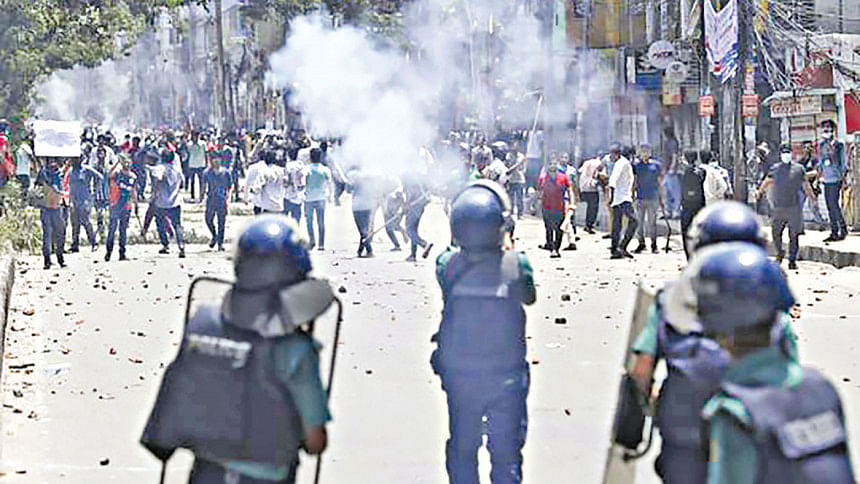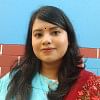‘We refused to retreat, even with bullets flying’

When protests against the quota system in government jobs erupted in Bangladesh during June and July, students believed they were standing up against a system they saw as discriminatory. Never did they imagine that their call for reform would be met with the brutal force of ruling party goons and the bullets of law enforcement.
What started as a peaceful demand for change quickly escalated into a violent confrontation with the state. Over the course of 36 days, students found themselves on the frontlines of a deadly battle. They were killed on the streets, beside their universities and even in their own homes. Their comrades were gunned down, many of them blinded, some of them lost their limbs or other vital body organs.
I was boarded on a rickshaw van by fellow protesters. But then they realised, the rickshaw puller was already dead after sustaining a bullet at some point. Then, one of the protesters took it upon himself to pedal the rickshaw and bring me to Uttara Adhunik Medical College Hospital.
For students involved, the trauma runs deep. They faced a harsh reality where death was no longer an abstract fear, but a vivid, horrifying presence.
Among them was Abdul Aziz, a protest coordinator from Jahangirnagar University, who fought alongside others on July 18 in Uttara, one of the deadliest days of the uprising.
Then a van arrived to collect the bodies. They were piling up all the bodies inside it. They picked me up too, thinking I was dead. Once the van had driven far enough from the police, I pushed the bodies aside and screamed -- I didn't die! I didn't die!
Five protesters died when police and Rapid Action Battalion opened fire on protesters in Uttara.
Over 500 were injured that day, he said.
"We refused to retreat, even with bullets flying," he added.
At one stage, the law enforcers shot aiming his head, he said.
He turned just right in time to evade a fatal headshot, but the bullet shattered his glass and hit his ear, he recounted.
"I was boarded on a rickshaw van by fellow protesters. But then they realised, the rickshaw puller was already dead after sustaining a bullet at some point."
"Then, one of the protesters took it upon himself to pedal the rickshaw and bring me to Uttara Adhunik Medical College Hospital," he said.
Aziz was speaking at a webinar titled "Confronting Death: The Experience of Students Against Discrimination", hosted by Forum for Bangladesh Studies in Dhaka yesterday.
Though Aziz required urgent neurological care, he was denied further treatment at the facility.
"The head of neurosurgery refused to treat me. Awami League supporters were hunting for me," he shared.
Under the cover of darkness, Aziz was moved to another hospital, but the damage had been done. His ear was severely infected. Forced to leave without completing treatment, he now lives with the lasting effects of that day.
For others like Sayem Khan, an East West University student, the July protests were just as traumatic.
Living near Jatrabari, the biggest flash-points, Sayem saw the brutal crackdown first-hand. "I saw around 60 people die," he said.
The sounds of gunshots reverberated through his house, as his mother sat in constant fear, always wondering if his son would be the next youth to return home in a coffin.
He recalls visiting families of martyrs, witnessing their grief, as funeral processions became a common scene in Jatrabari. "The police even sent the bodies outside Dhaka to be buried," he added.
The uprising's final days were no less harrowing. Sayem stood on the front lines again in early August, just as police opened fire.
"A bullet missed me but hit the person in front. He fell instantly," he recalled.
Hafez Kamrul Hasan Khan from Madinatul Ulum Madrasah, narrowly escaped death when the police opened fire under the Jatrabari flyover on August 4. "Two people collapsed on top of me after being shot. They died."
"Even with two bodies on top of me, I didn't move, fearing I'd be next," he said.
"Then a van arrived to collect the bodies. They were piling up all the bodies inside it. They picked me up too, thinking I was dead. Once the van had driven far enough from the police, I pushed the bodies aside and screamed -- I didn't die! I didn't die! Allah saved me!"
Dhaka University student Fahim Shahriar, who was targeted by the Chatra League and later by state intelligence agencies , also shared his experience.
"On July 24, when Nahid Islam was admitted to Gana Sasthya Hospital after being brutally beaten, I was tasked with collecting Tk 20,000 for his treatment. As I left the hospital, I realised intelligence agents were following me," he said.
"I had to change locations frequently," he added.
The story of Momtaz Soma, a student from Begum Rokeya University, echoed the experiences of many others.
She is a friend of Abu Sayed, whose death sparked the mass uprising.
The day Sayed was killed, even female students were not spared, she said.
A group of them, along with two male students, sought refuge in a roadside abandoned toilet, but when they came out, they were attacked again.
"The violence never seemed to end; even those already injured were not spared," she said.

 For all latest news, follow The Daily Star's Google News channel.
For all latest news, follow The Daily Star's Google News channel. 



Comments